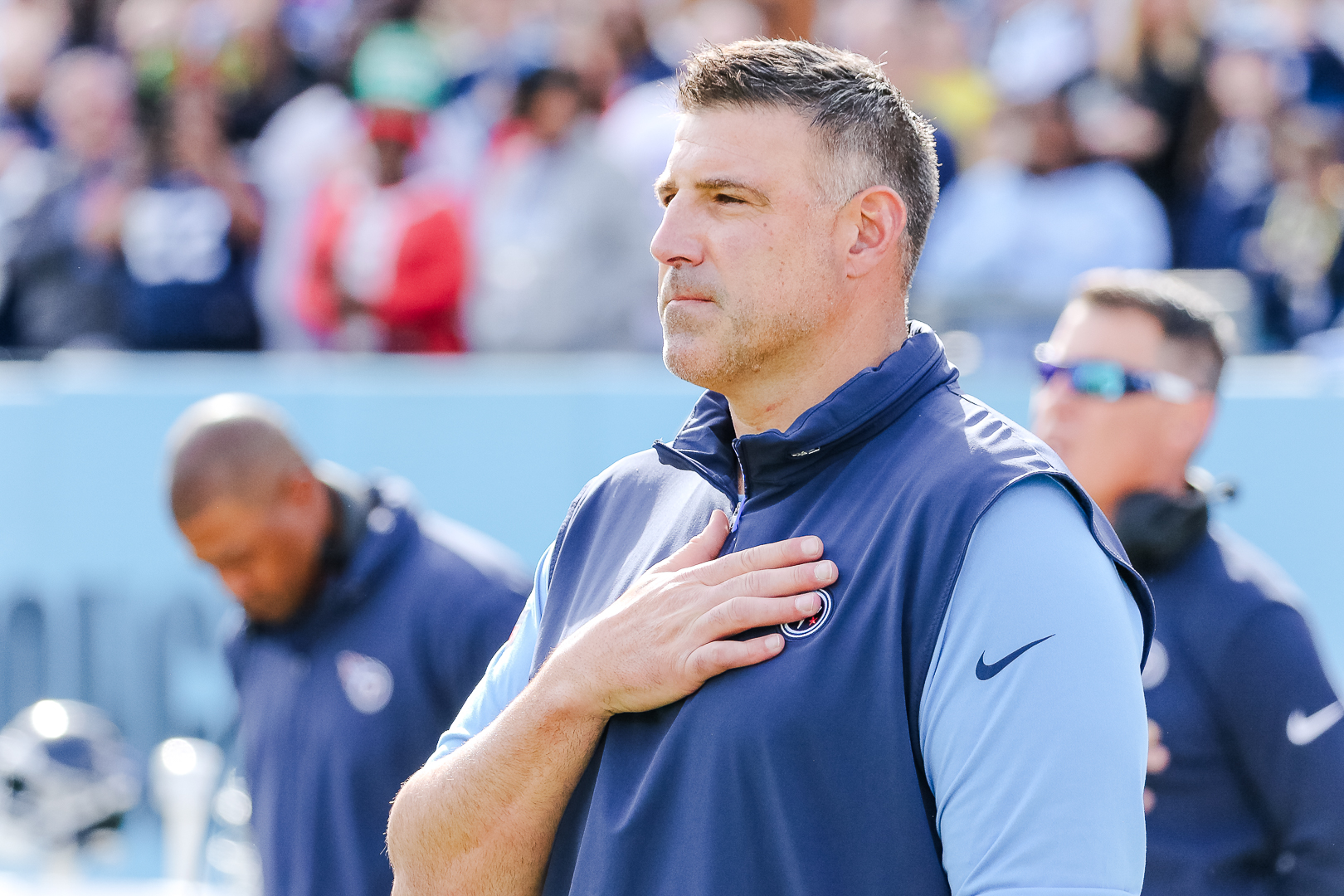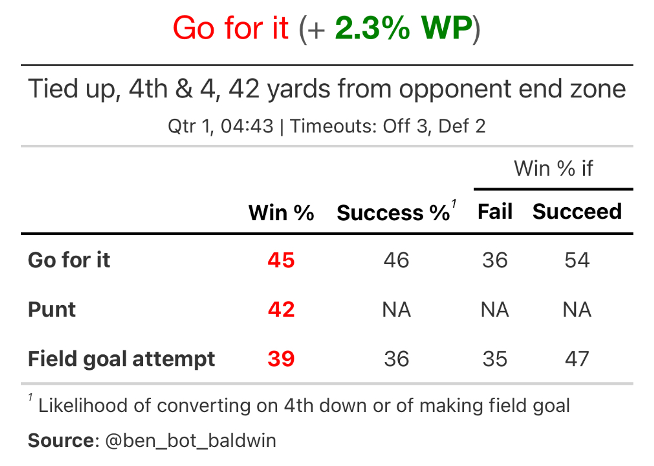By JAKE DOWNARD
Whether it is the prioritization of establishing the run, the unique delayed pressure with Jeffery Simmons and Denico Autry on defense, the combo blocks to clear out lanes for Derrick Henry or the utilization of Henry’s gravity to set up play action passes downfield, Mike Vrabel teams have always had an identity.

Unique looks on defense have led to the Titans finishing 4th, 14th, and 4th, respectively, in red zone scoring defense over the last three years. On the other side of the ball, they’ve finished top 10 in red-zone scoring offense each of the last four seasons.
Vrabel teams have historically possessed a certain sense of predictability on both sides of the ball. Much to the dismay of fans, this predictability has played a huge role in the Titans’ contending for a playoff berth year in and year out. While predictability may have a negative connotation, the identity, consistency, and cohesiveness within the locker room and game plan has led to wins on the field. So where exactly has that consistency and cohesiveness in the game plan gone?
Stay with me...
The Titans hold a Success Rate of 58.8% on fourth down this season, good for 10th in the NFL. So they are pretty effective when they line up and go for it on fourth down. We saw the Titans make an aggressive decision in Miami, going for 2 after the DeAndre Hopkins touchdown, ultimately leading to an upset win. With their backs against the wall and playing the part of spoiler, what exactly is the benefit of playing it safe and punting the ball on fourth-and-4 on Seattle’s 42-yard-line?

The above screenshot comes from this fourth-down calculator. The analytics say to go for it there, the fans say to go for it there, the Titans were in the midst of a sustained drive, the score was 0-0, and they still elected to punt. Whether it’s the offensive line, the secondary, the front four, the quarterback, or the decision-making of the coaching staff, the once-consistent-Titans have displayed a complete masterclass of inconsistency throughout the season.
The #Titans punted on fourth-and-4 from the SEA 42 in the first quarter.
— Paul Kuharsky (@PaulKuharskyNFL) December 26, 2023
They did gain 36 yards of field position. pic.twitter.com/V5k7IuXLTt
It did turn out as Vrabel hoped. The Seahawks lost a yard and punted it back from their 5. The Titans drove 57 yards in six plays for a touchdown that opened the scoring.
Let’s take a look at some other numbers from the Christmas Eve matchup.
Here’s how the Titans offense fared against the Seahawks in some of our favorite advanced numbers. Monday's games not included:
- EPA/Play: 0.136 (8th of 26)
- Success Rate: 52.3% (2nd)
- Dropback EPA: 0.155 (14th)
- Dropback SR: 47.2% (11th)
- Rush EPA: 0.113 (4th)
- Rush SR: 58.6% (1st)
Success Rate is a number we’ve touched on a lot this year. In particular, I think a high Rush Success Rate is something that is going to correlate heavily with an efficient offensive attack under Tim Kelly. It is no secret that Kelly wants to push the ball downfield; Will Levis ranks first in Air Yards / Attempt in the NFL this season. I think Sunday would have been a perfect opportunity for the Titans to take advantage of the success on the ground and really air it out.
Unfortunately, Ryan Tannehill threw for just 4.8 Air Yards / Attempt in his return to action (25th among 29 qualifying QBs). This led to a mundane offensive attack reminiscent of the 2022 Titans, where they ran the ball effectively and seldom took advantage of it.
The Titans finished the game with just one X-play, Tannehill’s 23-yard scamper in the first half and did not complete a pass of more than 17 yards on Sunday. The beauty of the run game in the modern NFL is the ability to use it as a complement to a dangerous passing attack. We see this all the time with the most potent offenses in the NFL, including the 49ers, Cowboys and Dolphins. Each year it becomes increasingly difficult to win games leaning almost entirely on the run, as we saw on Sunday in Nashville.
Here’s how Tannehill’s 23 targets were spread out against Seattle:
- Tyjae Spears: 6 targets (26.1%)
- Chig Okonkwo: 6 targets (26.1%)
- DeAndre Hopkins: 4 targets (17.4%)
- Treylon Burks: 3 targets (13.0%)
- Chris Moore: 2 targets (8.6%)
- Derrick Henry: 1 target (4.3%)
- Mason Kinsey: 1 target (4.3%)
- Colton Dowell: 1 target (4.3%)
The resurgence of Okonkwo has certainly been something we've been waiting for. The second-year TE who struggled with drops early in the season caught all six of his targets for 63 yards and a touchdown. Over the last five games, Okonkwo has caught 21 of 26 targets for 252 yards. Another young playmaker, ![]() Tyjae Spears, has recorded 100 yards rushing and 123 yards receiving over the last three weeks. To a lesser extent, Treylon Burks has gotten back involved offensively, pulling down five catches for 87 yards in the last 10 days.
Tyjae Spears, has recorded 100 yards rushing and 123 yards receiving over the last three weeks. To a lesser extent, Treylon Burks has gotten back involved offensively, pulling down five catches for 87 yards in the last 10 days.
Regardless of who is under center for the final two weeks of the 2023 season, I’d love to see the Titans continue to get Okonkwo, Burks and Spears the ball. Live game reps are invaluable, and despite being out of the playoff picture, the next two weeks present outstanding opportunities to build confidence in the weapons that will almost certainly be back next season. The development of those three, who are primed for complementary roles in 2024, will have massive implications on the success of the team next year.
***
Jake Downard is a law student who creates NFL and NBA content focused on analytics on Twitter as @JakeAndBall. He also works with fanspo.com. A glossary of the analytics terms he uses is at the bottom of the piece.
For a glossary of the metrics and terms used in this post, please see this earlier file.










You are not authorised to post comments.